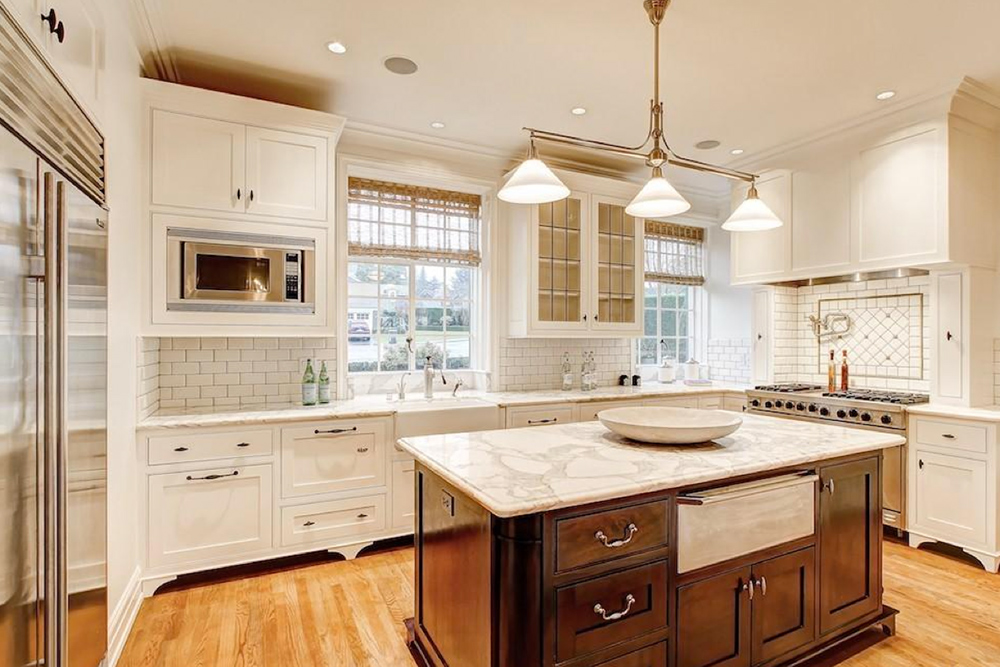When it comes to home remodeling, the thought of transforming your living space can be both stimulating and overwhelming. If you wish to update a single room or embark on a complete renovation, a well-organized plan is vital to navigating the complexities of the process. From setting a budget to choosing the right materials and designs, understanding the different aspects of a remodel can make a considerable difference in the outcome.
In this definitive guide, we will guide you through a step-by-step plan to ensure your home remodeling project is effective and worthwhile. You will find tips on how to remodel your home on a budget while incorporating the latest trends for 2024. We will also explore the benefits of DIY versus contracting a contractor, typical pitfalls to avoid, and room-specific ideas that suit each space in your home. No matter local remodeler , getting informed about your options is the key to creating the home of your dreams.
Preparing Your Home Renovation
Prior to diving into the home remodeling project, it is important to create a solid plan. Begin by setting your goals for the remodel—whether it is to improve usability, upgrading the look and feel, or increasing the worth of your home. Conduct extensive investigation on existing home remodeling trends and gather inspiration from multiple sources, such as interior design publications or websites. This first phase will help you clarify the vision and set realistic expectations for the project.
Budgeting is a crucial aspect of organizing the remodel. Determine how much you can afford to invest and allocate resources to varied areas of the project. Consider expenses related to supplies, labor, and unexpected costs that may arise during the remodeling process. To help you manage your finances, create a detailed budget breakdown and prioritize elements that are essential versus those that can be changed or delayed. Implementing cost-saving tips, such as utilizing salvaged materials or looking for affordable upgrades, can keep your project within financial limits.

Finally, decide whether you will tackle the remodel as a DIY project or hire a contractor. Both approaches have their benefits, and your choice should depend on your skill level, the complexity of the project, and your timeline. If you are leaning toward hiring a contractor, look into and interview potential candidates to find a trustworthy professional who fits with your vision and budget. Whichever route you choose, ensure that you have a well-structured plan in place to guide you through the entire process of the remodeling process.
Budgeting and Expense Reduction Strategies
Establishing a practical budget is crucial for a successful remodel. Begin by calculating the overall costs of supplies, labor, and any unexpected expenses. It's recommended to reserve an extra 10 to 20 % of your budget for contingencies, ensuring that you can manage any surprises that may arise during the project. Research local costs for materials and labor to create an informed budget that aligns with your monetary situation.
To maintain your remodel cost-effective, focus on projects that provide the best returns on expenditure. Focus on areas like kitchen and restroom renovations, where the chance for value enhancement is substantial. Consider DIY alternatives for less complex projects, which can save substantial amounts. However, be realistic about your capabilities and time commitment, as some tasks are best left to the experts to prevent costly mistakes.
Another effective strategy is to look for reclaimed or surplus supplies that can bring character while lowering costs. By being resourceful and adaptable with your choices, such as choosing alternative finishes or fixtures, you can attain the desired look without breaking the bank. Remember to check prices from multiple suppliers and consider timing your purchases during sales to maximize your cost savings.
Trends in Design and Tailored Elements
In the year 2024, home remodeling is heavily influenced by a blend of ease and style, with an emphasis on creating welcoming environments that reflect individual styles. Earthy materials such as hardwood, stone, and eco-friendly materials are trending, promoting a cozy look that connects the indoors with the outside. Additionally, vibrant hues have made a resurgence, allowing homeowners to express their personal style through accent walls, cabinetry, and decor. Incorporating elements like dimensional wall treatments and distinctive light sources can also enhance the overall ambiance, making spaces feel more energetic and unified.
Tailoring is essential when it comes to making a home truly one-of-a-kind. Features such as integrated storage, bay windows, and personalized storage options not only maximize functionality but also introduce personality to any space. Walk-in closets and efficient workspaces continue to become more popular, reflecting the growing need for organization and streamlined living in daily life. Furthermore, incorporating home automation into remodels is becoming a standard practice, offering comfort and enhancing protection while seamlessly blending into the home's design.
As you prepare for your remodel, consider high-end investments that elevate utility without compromising on style. Features like retreat-like baths, complete with saunas or soaking tubs, can create indulgent spaces within the home. Open floor plans are still favored, reinforcing social connections while accommodating current habits. By carefully selecting design trends and custom features, you can create a home that is not only aesthetic but also personalized to your preferences.
